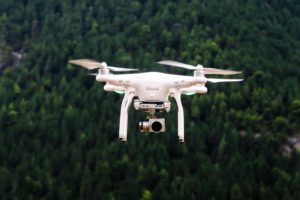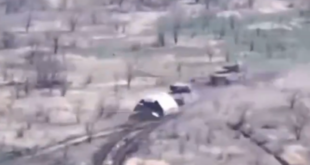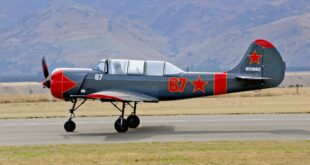In the continued discussion of how best to implement Remote ID for drones – which purportedly is designed to enhance the security of the airspace – major manufacturers like DJI have an important role. Whatever the final decision is, DJI and other manufacturers will have to comply: and to meet customer requirements, they’ll have to make it easy and inexpensive for operators to comply also.
That’s why DJI has been working on the problem in anticipation of the rule for several years, demonstrating technology like AeroScope – a “drone license plate” technology released more than 2 years ago – and most recently, their “drone to phone” ID system. This last, while intended as a demonstration of capabilities, received some criticism from the operator community. Faced with headlines like The Verge’s “DJI Wants to Let Anyone With a Smartphone Monitor Drones Nearby,” operators raised concerns that legitimate missions could face privacy and harassment issues from the general public.
Now, DJI is addressing those concerns in an article which points out that the final say on who should be able to track drones won’t be theirs, but the FAA’s. Having already raised concerns – shared by many – that the proposed rule is overly complex and burdensome for operators, DJI now calls the drone industry to communicate their fears about privacy to the correct party: the FAA.
The NPRM is available at this link and the FAA’s proposed regulation specifically requires that “[t]he location of the control station of the unmanned aircraft system must be generated and encoded into the message elements and must correspond to the location of the person manipulating the flight controls of the unmanned aircraft system.” The NPRM also says in at least two places that “message elements themselves would be publicly accessible information,” although in other places the proposal is more vague. This location message element is also what the global standards body ASTM International has developed in its Remote ID standard, which is nearing finalization.
DJI has always been concerned with protecting the privacy of drone pilots, and made clear three years ago in this white paper that privacy should be one of the most important considerations for regulators as they write Remote ID rules. Of course, if the rules require pilot location to be widely disclosed, DJI’s solutions will have to comply.
It’s a good point. The Remote ID framework that the U.S. drone industry will have to follow isn’t up to any one service provider of any area – it’s up to lawmakers. That’s why this NPRM requires careful thought and commentary from all parties: not just about how the technology will work, but to sound the alarm about any unintended consequences of the rule. The demonstration of Drone to Phone – see the video below for details – served to show what Remote ID could look like. It’s up to the industry to work with lawmakers to shape what Remote ID will be.
Miriam McNabb is the Editor-in-Chief of DRONELIFE and CEO of JobForDrones, a professional drone services marketplace, and a fascinated observer of the emerging drone industry and the regulatory environment for drones. Miriam has a degree from the University of Chicago and over 20 years of experience in high tech sales and marketing for new technologies.
For drone industry consulting or writing, Email Miriam or (for paid consulting engagements only) request a meeting through AdvisoryCloud:
TWITTER:@spaldingbarker
Subscribe to DroneLife here.
https://dronelife.com/2020/02/20/who-should-know-where-your-drone-is-dji-responds-to-drone-to-phone-confusion/
 Unmanned Aerial Vehicle The latest drone news
Unmanned Aerial Vehicle The latest drone news





